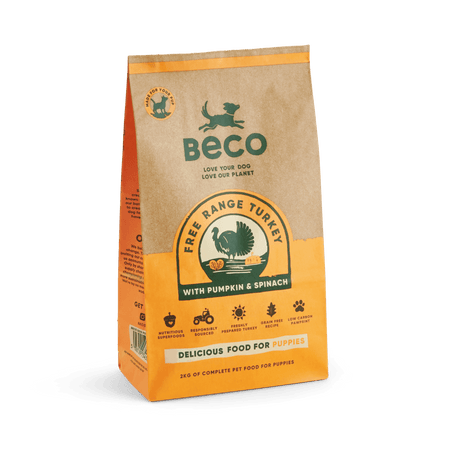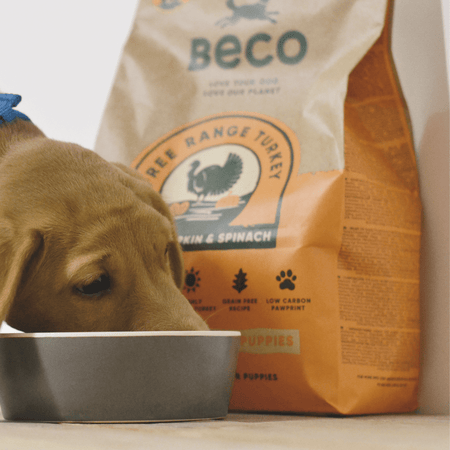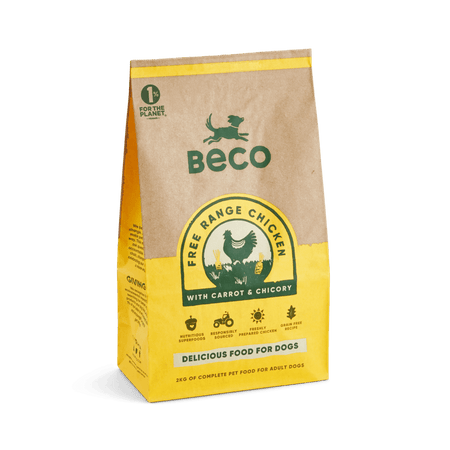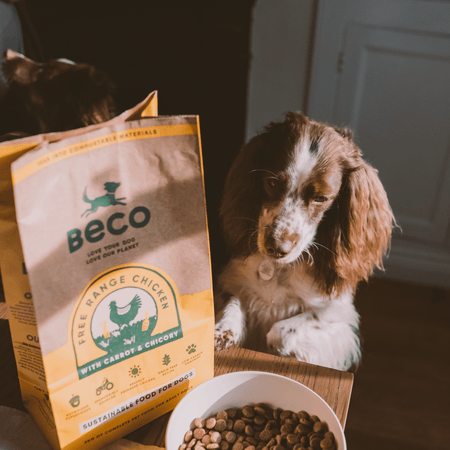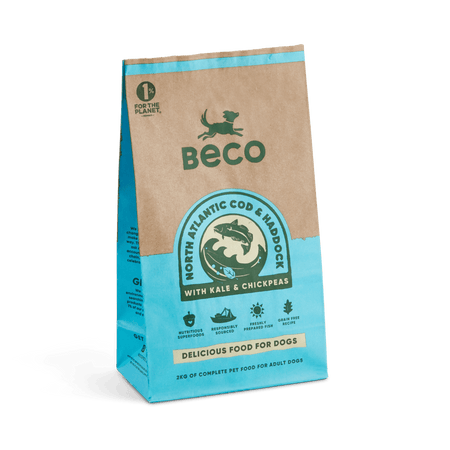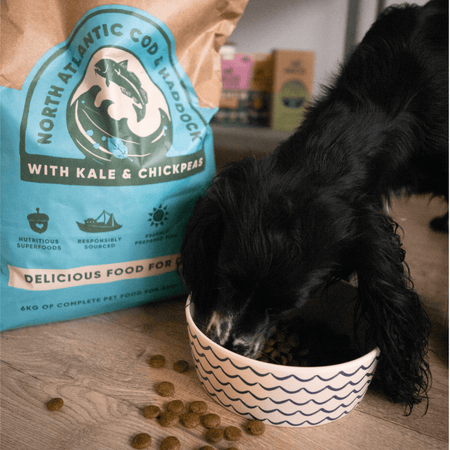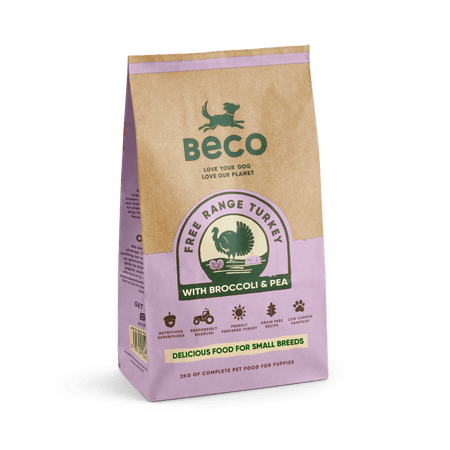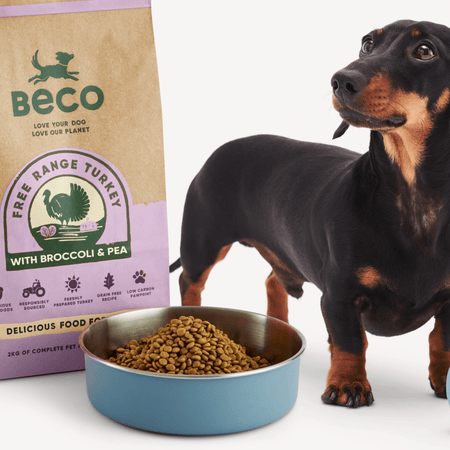Feeding a dog should be straightforward, but with so many opinions out there – raw, kibble, grain-free, home-cooked – it quickly gets confusing.
Whether you're trying to solve a specific issue or just make sure your dog’s getting what they need, it helps to understand the basics.
We’ll walk through what dogs eat, what they actually need, and how to make sense of the choices.
- Dogs need balanced protein, fats, and nutrients specific to their life stage.
- Nutritional requirements vary significantly by breed size, age, and activity level.
- Commercial options range from kibble to fresh-cooked, each with distinct benefits.
- Some human foods benefit dogs while others can be toxic.
Canine Nutritional Needs
Dogs are primarily carnivorous with omnivorous adaptations, requiring a diet rich in animal proteins, supplemented with plant-based nutrients for a balanced intake.
While they’ve evolved alongside humans, their digestive systems still rely on many of the same components their wild ancestors needed.
Essential Nutrients
-
Proteins: Vital for building and maintaining muscle, supporting immune function, and carrying out bodily processes.
-
Fats: Dogs rely on healthy fats as a primary energy source. They also support skin, coat, and brain health.
-
Carbohydrates: Often misunderstood – carbs aren’t essential but provide useful energy and dietary fibre. Whole grains and vegetables are common sources.
-
Vitamins: Dogs require small but consistent levels of vitamins like A, D, E, and B-complex for metabolic health.
-
Minerals: Include calcium, phosphorus, zinc, and more, each playing a unique role in bone structure, fluid balance, and nerve signalling.
-
Water: The most overlooked nutrient. Even mild dehydration can affect digestion, energy, and organ function.
Life Stage Nutrition
Nutritional requirements change significantly throughout a dog’s life.
-
Puppies: Need calorie-dense, protein-rich food to support rapid growth and development.
-
Adult Dogs: Once growth stabilises, adult dogs do best on diets formulated for maintenance – steady protein, moderate fat, and fewer calories than puppy food.
-
Senior Dogs: Ageing dogs may benefit from added omega-3s, joint support supplements, and lower-calorie formulas to prevent weight gain.
Breed-Specific Dietary Considerations
Breed influences nutritional needs due to metabolism, size, activity level, and health predispositions.
-
Small Breeds: Burn calories faster and benefit from small, energy-dense meals. Look for bite-sized kibble too.
-
Large Breeds: Prone to joint issues and weight gain. Choose formulas that support bone and joint health, with moderated calories and controlled calcium levels.
-
Working Breeds: Require higher protein and fat to sustain activity levels. Electrolyte balance can also be important in hot climates or intense work conditions.
Safe and Unsafe Foods for Dogs
-
Plenty of human foods can be shared with your pup in moderation.
Safe: Plain cooked meats, carrots, blueberries, green beans, rice, oats, and plain yogurt. -
Avoid: Chocolate, grapes, raisins, onions, garlic, avocado, alcohol, caffeine, and anything with xylitol. Even small amounts can be dangerous, so double-check unfamiliar foods.
Can Dogs Taste and Feel Spice?
Dogs don’t experience flavours the same way we do. They’ve got around 1,700 taste buds (compared to our 9,000), but they’re far more sensitive to smells.
They can detect spice, just not the way you might expect. Capsaicin (the compound that makes chillies hot) triggers their pain receptors, not their tastebuds. Best to avoid anything spicy, not just for taste but for gut health too.
Exploring Dog Food Options
Dry Kibble
The most popular choice for a reason. It’s affordable, easy to store, and helps reduce plaque. That said, not all kibble is equal – always check the ingredient list.
Wet/Canned Food
Higher in moisture, great for picky eaters or dogs with dental concerns. Often pricier per meal.
Fresh-Cooked Commercial Meals
Cooked, frozen, and delivered. These options offer whole-food nutrition with minimal processing, but come with a higher cost.
Homemade Diets
Offer full control, but they’re labour-intensive and must be balanced carefully. Nutrient deficiencies are a risk without guidance.
Raw Diets
Aim to mirror a dog’s natural prey-based diet. Popular among some owners, though vets warn of bacterial risks and imbalance without vet-supervised planning.
Grain-Free Dog Food
Grain-free dog food has gained popularity for good reason.
Instead of traditional grains like wheat, corn, or barley, it’s made with ingredients such as sweet potato, peas, and lentils—carbohydrate sources that are often easier to digest and gentler on sensitive stomachs.
For dogs with grain allergies or intolerances (even if rare), this switch can make a noticeable difference in skin health, digestion, and overall comfort.
Even beyond allergies, some owners find their dogs simply do better on grain-free diets, showing more consistent energy levels, firmer stools, or shinier coats.
Plant-Based Diets for Dogs
Yes, it’s possible, but not simple.
Dogs can technically survive (and even do well) on a plant-based diet if it’s properly formulated with all essential nutrients.
However, this requires significant knowledge or a vet-approved commercial product. These diets are often best suited for adult dogs, as puppies and pregnant dogs have more complex nutritional demands.
Feeding Practices and Routines
Establish a schedule that fits your dog’s age and size. Puppies eat 3–4 times daily, while adults usually do well on two meals. Free-feeding can work for some, but portion control becomes harder.
Weigh your dog’s food instead of guessing, and don’t forget to factor in treats – especially during training.
Training and Feeding Behaviour
Food is one of the most effective training tools. Use small, high-reward treats for positive reinforcement.
If your dog is showing food aggression, guard behaviour, or pickiness, these can often be improved with structure, calm handling, and routine.
Avoid hand-feeding long-term as it can set habits that are tough to break.
Specialised Diets for Health Conditions
Tailored diets are often necessary for chronic or acute conditions.
-
Allergies: May need novel protein or hydrolysed formulas.
-
Kidney Disease: Requires lower protein and phosphorus.
-
Heart Conditions: Often need reduced sodium and added taurine.
-
Joint Issues: Benefit from omega-3s and glucosamine.
Work closely with your vet to find the right approach, and always transition gradually to avoid digestive upset.
Frequently Asked Questions
How often should I feed my adult dog each day?
Twice a day works for most, though smaller breeds may benefit from three smaller meals.
How can I tell if my dog has food allergies versus food intolerances?
Allergies usually show up as skin issues, while intolerances often cause tummy trouble. An elimination diet is the best way to pinpoint the culprit.
How much water should my dog drink daily?
Roughly 1 ounce per pound of body weight, depending on the weather, activity level, and food moisture content.
Should I add supplements to my dog's diet if I'm feeding high-quality commercial food?
Not usually. Most complete foods are balanced already, and over-supplementing can cause problems. Always check with your vet first.
Conclusion
Choosing what to feed your dog isn’t always simple, but it doesn’t have to be confusing either.
Whether you’re feeding a puppy, a senior, or a dog with specific needs, the basics stay the same: balanced nutrients, steady routines, and a watchful eye on how they’re doing.
Grain-free food can be a solid choice, especially for dogs with sensitivities. And plenty of owners report better digestion, healthier skin, and more consistent energy after switching.
Our grain-free range is packed with quality ingredients – free-range proteins, veg like pumpkin and kale, and nothing artificial. If you’re ready to try something better, start with a recipe that puts your dog’s wellbeing first. Shop now!












